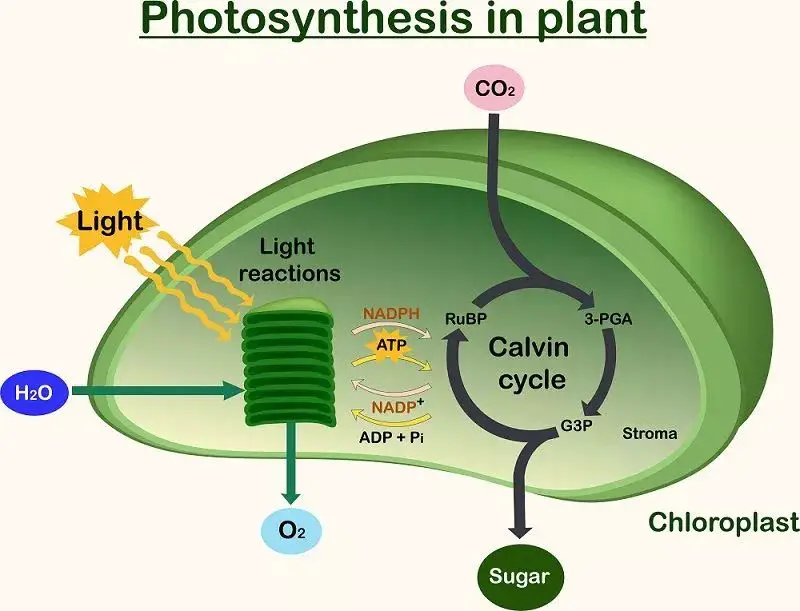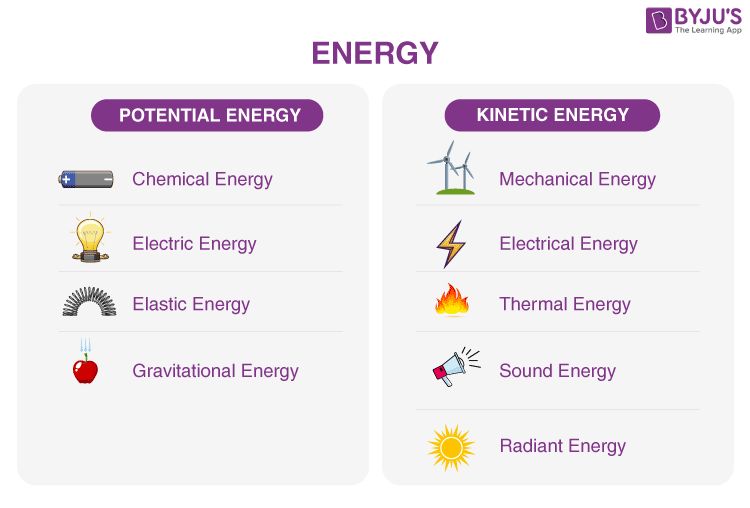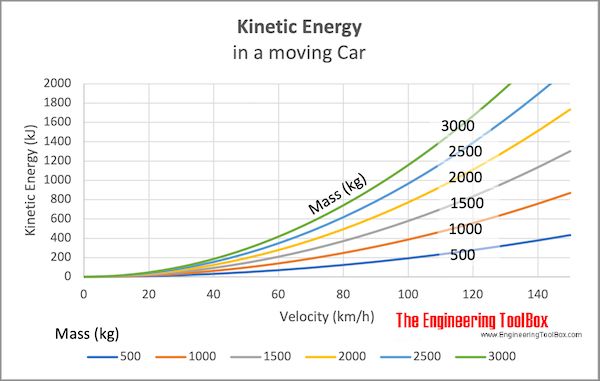What Do Green Plants Do With Energy From The Sun?
Photosynthesis is the process by which plants, algae, and certain bacteria convert sunlight into chemical energy. During photosynthesis, organisms use the energy from sunlight to convert carbon dioxide and water into glucose (sugar) and oxygen. The glucose provides food for the organism, while oxygen is released as a byproduct into the atmosphere.
Photosynthesis is vital to life on Earth. It provides the basic food source for nearly all life on the planet, either directly or indirectly. By producing oxygen, photosynthesis made possible the evolution of organisms that breathe oxygen, including humans. The oxygen in our atmosphere originally came from photosynthetic organisms. Overall, photosynthesis is responsible for supplying energy to the vast majority of ecosystems.
The overall process of photosynthesis can be summarized in two main stages: light reactions and dark reactions. In the light reactions, light energy from the sun is absorbed by chlorophyll and converted into chemical energy stored in ATP and NADPH. In the dark reactions, the ATP and NADPH produced in the light reactions provide energy to power the assembly of glucose molecules from carbon dioxide. The dark reactions do not require light directly but utilize the products from the light reactions.
Capturing Light Energy
Plants capture light energy from the sun using light-absorbing molecules called pigments. The main light-absorbing pigment is chlorophyll, which gives plants their green color. Chlorophyll absorbs light mostly in the red and blue regions of the visible light spectrum.
When a chlorophyll molecule absorbs light, the energy from the photon of light raises an electron in the chlorophyll molecule to a higher energy state. This excited electron contains excitation energy that can be used to power chemical reactions. Different types of chlorophyll, like chlorophyll a and chlorophyll b, have slightly different absorption spectra and absorb light optimally at different wavelengths. By containing multiple types of chlorophyll, plants can absorb light more efficiently across the visible light spectrum.
Light Reactions
The light reactions of photosynthesis begin when light energy is absorbed by chlorophyll molecules in a plant leaf. This absorbed light excites electrons within the chloroplasts, triggering a series of electron transfers along an electron transport chain. The electron transport chain contains two photosystems – Photosystem I and Photosystem II.
Photosystem II absorbs light energy, exciting an electron within the reaction center chlorophyll molecule. This electron is passed to the primary electron acceptor within Photosystem II. The excited electron is then transported along the electron transport chain, passing through cytochromes and other proteins within the thylakoid membrane. The electron’s energy is used to pump hydrogen ions from the stroma into the thylakoid space, producing a proton gradient.
When the electron reaches Photosystem I, more light energy is absorbed, further exciting the electron. The high-energy electron is then transferred to the primary electron acceptor in Photosystem I. The electron is again transported along the electron transport chain, its energy used to create more proton motive force. The electron is finally passed to NADP+, reducing it to NADPH.
This entire process results in the light-dependent production of NADPH and storage of energy as proton motive force. The proton gradient then drives ATP synthase to produce ATP. The NADPH and ATP generated by the light reactions provide the energy and electrons needed for the next stage of photosynthesis, the light-independent reactions.
Dark Reactions
The dark reactions of photosynthesis, also known as the light-independent reactions, take place in the stroma of the chloroplast after the light reactions are complete. Dark reactions do not directly require light energy, but rather utilize the ATP and NADPH generated from the light reactions.
The key purpose of the dark reactions is carbon fixation, the process by which atmospheric carbon dioxide is converted by organisms into energy-rich molecules such as glucose. Carbon fixation is carried out by the enzyme rubisco, which catalyzes the reaction between CO2 and ribulose-1,5-bisphosphate (RuBP) to produce 3-phosphoglycerate (3-PGA), a 3-carbon molecule.
3-PGA then goes through a series of intermediate steps known as the Calvin cycle, which regenerates the 5-carbon RuBP so that the dark reactions can continue. For each CO2 that enters the cycle, two 3-PGA molecules are produced, with six turns of the cycle required to generate one glucose molecule. The regeneration of RuBP enables the plant to continue fixing CO2 without using up the starting material.
In summary, the dark reactions harness the energy-carrier molecules from the light reactions to bind carbon dioxide and convert it into carbohydrates or other organic compounds. This process of carbon fixation and the Calvin cycle are responsible for the bulk of energy storage from photosynthesis.
C3 Photosynthesis
The majority of plants, including most trees and agricultural crops such as wheat, rice, and soybeans, use the C3 carbon fixation pathway during photosynthesis. This process is characterized by the 3-carbon compound 3-phosphoglycerate that is the first stable product of carbon fixation.
During C3 photosynthesis, atmospheric CO2 is first fixed by the enzyme RuBisCO into a 3-carbon compound called 3-phosphoglycerate. This reaction occurs in the stroma of chloroplasts.
The 3-phosphoglycerate is then converted through multiple steps into glyceraldehyde 3-phosphate (G3P). Some G3P molecules leave the chloroplasts and are converted into sugars and other organic molecules. Other G3P molecules are recycled to regenerate RuBP, the 5-carbon compound that combines with CO2 at the start of the cycle.
Photorespiration can occur when RuBisCO oxygenates RuBP instead of carboxylating it. This leads to loss of fixed carbon. C3 plants minimize photorespiration by having their stomata partially closed in the afternoon to reduce oxygen and increase CO2 diffusion into the leaf.
Because the first stable product of C3 carbon fixation is a 3-carbon compound, this process is named C3 photosynthesis. It is the most common of the three metabolic photosynthetic pathways, used by the majority of plants on Earth.
C4 Photosynthesis
The C4 pathway is an alternative photosynthetic pathway to the more common C3 pathway. C4 photosynthesis is mainly found in certain grasses and sedges that are adapted to hot, dry environments. The key difference between C3 and C4 photosynthesis is that C4 plants use PEP carboxylase in mesophyll cells to initially fix CO2 into a compound with 4 carbon atoms. This 4-carbon compound is transported to bundle sheath cells where the Calvin cycle proceeds as normal.

The C4 pathway has several advantages over the C3 pathway. By initially fixing CO2 into organic acids, C4 plants are able to concentrate CO2 in the bundle sheath cells, reducing photorespiration. Additionally, PEP carboxylase has a higher affinity for CO2 compared to Rubisco, allowing C4 plants to photosynthesize even when CO2 levels are low. This allows C4 plants to keep their stomata closed for longer to conserve water, making them well-suited to hot, arid environments. While the C4 pathway requires more energy in the form of ATP, the benefits of reduced photorespiration and improved water-use efficiency outweigh the extra energy costs in certain environmental conditions.
CAM Photosynthesis
CAM (Crassulacean Acid Metabolism) is an adaptation some plants have evolved to survive in hot, dry environments. It allows plants to open their stomata (pores in leaves) at night to absorb CO2, when evaporation rates are lower, and store it as malic acid for use during the day.
The CAM pathway has 4 main steps:
-
At night, stomata open and CO2 enters, is fixed by PEP carboxylase into oxaloacetic acid, which is then converted to malic acid and stored in vacuoles.
-
During the day, stomata are closed to conserve water. Malic acid is transported out of vacuoles into cytoplasm.
-
Malic acid is decarboxylated to release CO2, which enters Calvin cycle reactions to produce sugars.
-
At night, malic acid is regenerated so the cycle can repeat.
By fixing CO2 at night, CAM plants reduce photorespiration and water loss. This allows them to thrive in hot, arid conditions that would cause other plants to wilt and die. Examples of CAM plants include cacti, agaves, and some orchids.
Photorespiration
Photorespiration is a process that occurs when the enzyme rubisco catalyzes both carboxylation and oxygenation reactions. Rubisco is the main enzyme involved in carbon fixation during photosynthesis. However, approximately 25% of the time, rubisco mistakenly binds oxygen instead of carbon dioxide.
When rubisco binds oxygen, it leads to the formation of a two-carbon compound called phosphoglycolate, instead of the usual three-carbon compound 3-phosphoglycerate. Phosphoglycolate cannot directly enter the next steps of the Calvin cycle. Instead, it must be converted back into a usable three-carbon compound through a series of energy-consuming reactions known as the photorespiratory pathway.
The recovery process of phosphoglycolate consumes ATP energy and releases previously fixed CO2, resulting in an overall loss of fixed carbon. Therefore, photorespiration lowers the efficiency and productivity of photosynthesis. Since rubisco is responsible for initiating this wasteful side reaction, it directly leads to the loss of previously fixed carbon and reduced photosynthetic output.
Factors Affecting Rate
The rate of photosynthesis is influenced by several factors, including light intensity, carbon dioxide levels, and temperature. These environmental conditions can speed up or slow down the photosynthetic process.
Light intensity has a direct effect on the rate of photosynthesis. Plants require light to drive the light-dependent reactions. An increase in brightness provides more energy for these reactions, resulting in faster production of ATP and NADPH. However, beyond a certain light intensity, the rate hits a plateau due to other limiting factors.
Carbon dioxide concentration also impacts the photosynthetic rate. CO2 is a key reactant in the Calvin cycle reactions. Higher CO2 levels mean more substrate is available for carbon fixation, resulting in increased sugar output. However, beyond a certain concentration, the rate becomes limited by RuBisCO enzyme activity.
Temperature affects photosynthesis because enzymes have an optimal temperature range. Lower temperatures cause enzymes to work slower. As temperature rises, enzymatic activity and kinetics increase, accelerating the photosynthetic rate. However, too high of temperatures will denature enzymes. The ideal temperature for most plant photosynthesis is 20-30°C.
Conclusion
Photosynthesis is an extremely important process by which green plants, algae, and certain other organisms convert sunlight into chemical energy that is stored and later used as fuel. The key steps of photosynthesis involve capturing light energy to split water molecules and release oxygen, and using the energy from light to drive the formation of energy-rich glucose molecules from carbon dioxide. This allows plants to utilize the energy in sunlight to produce the nutrients they need to grow and survive.
In summary, photosynthesis converts light energy into chemical energy that is stored in the bonds of glucose. This stored chemical energy is later used by plants and other organisms for growth, metabolism, and other cellular processes. Photosynthesis is essential for all aerobic life on Earth, and provides the foundation of almost all food chains and webs. By understanding the key steps and factors that affect the rate of photosynthesis, scientists can work to improve agricultural yields and better understand the global carbon cycle.






